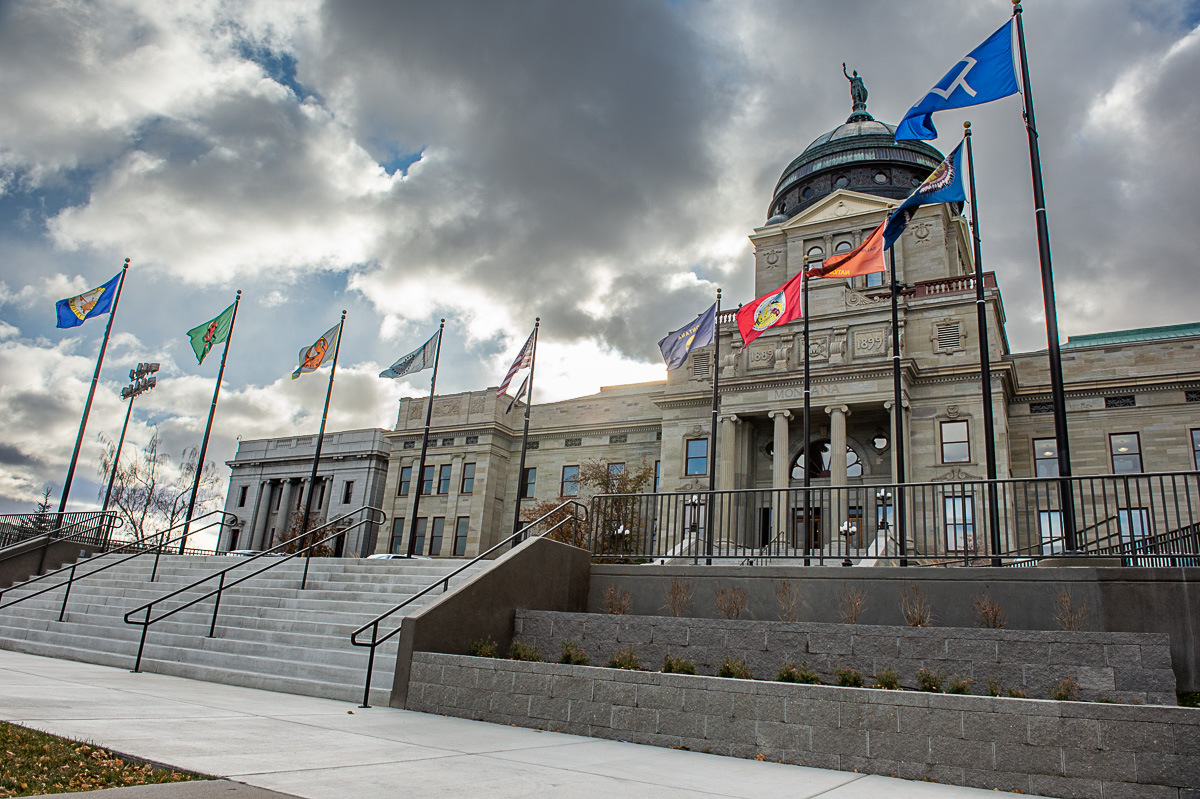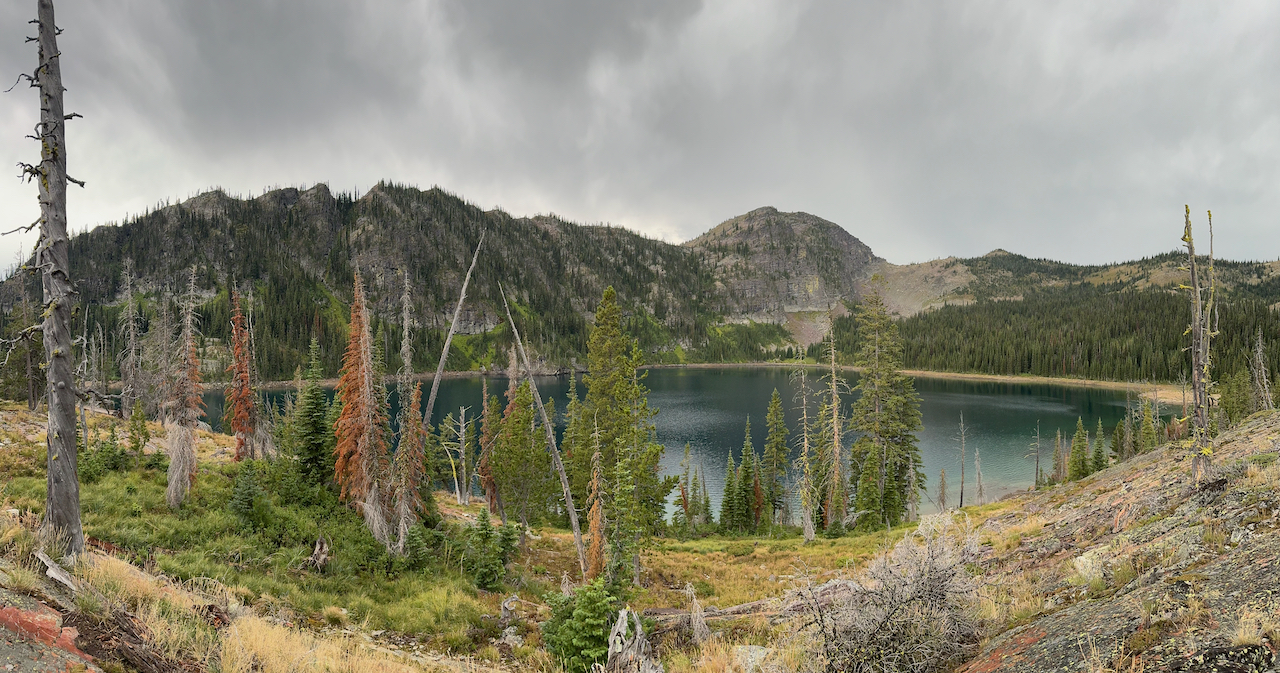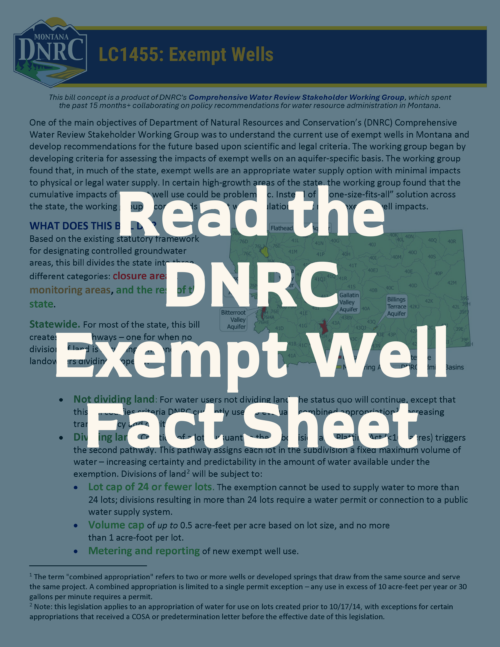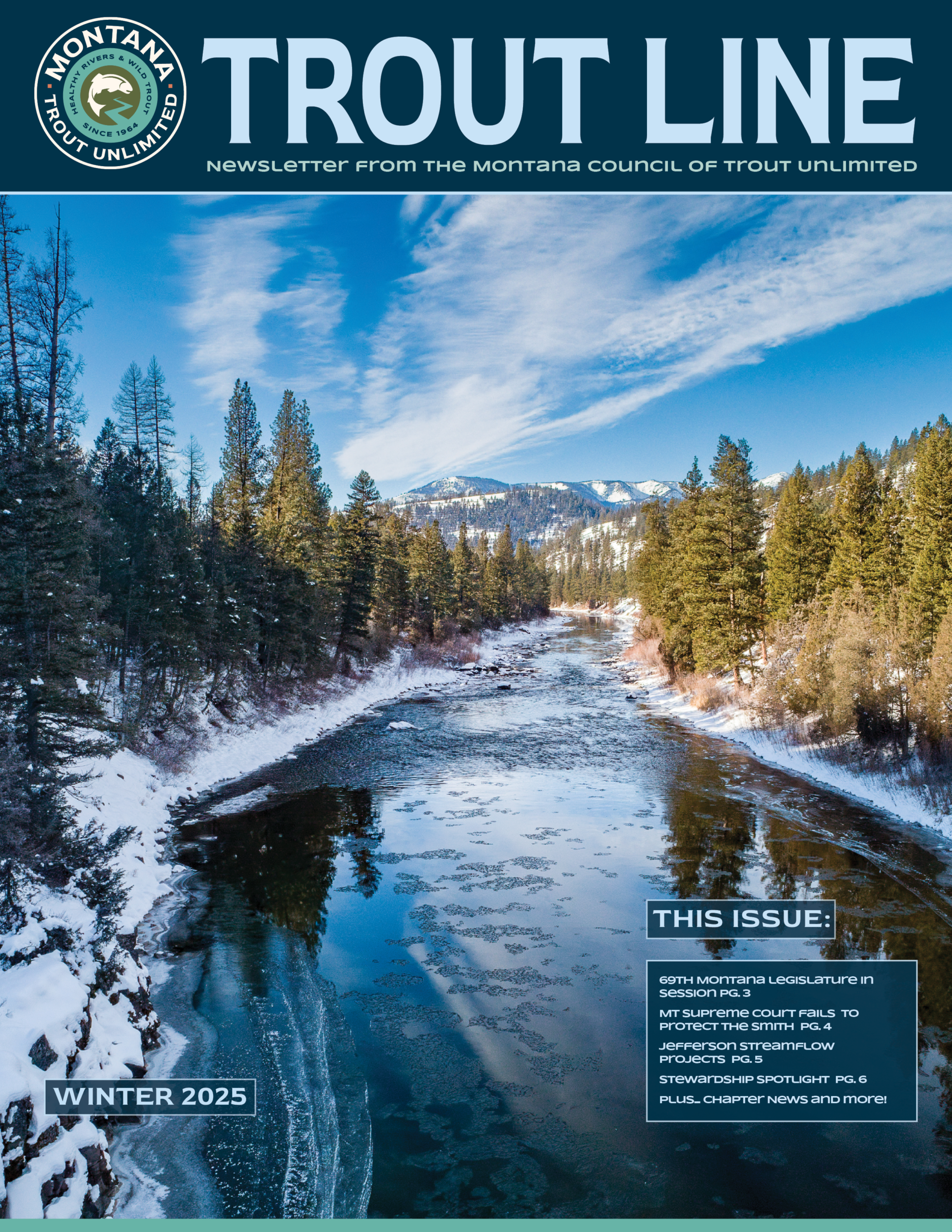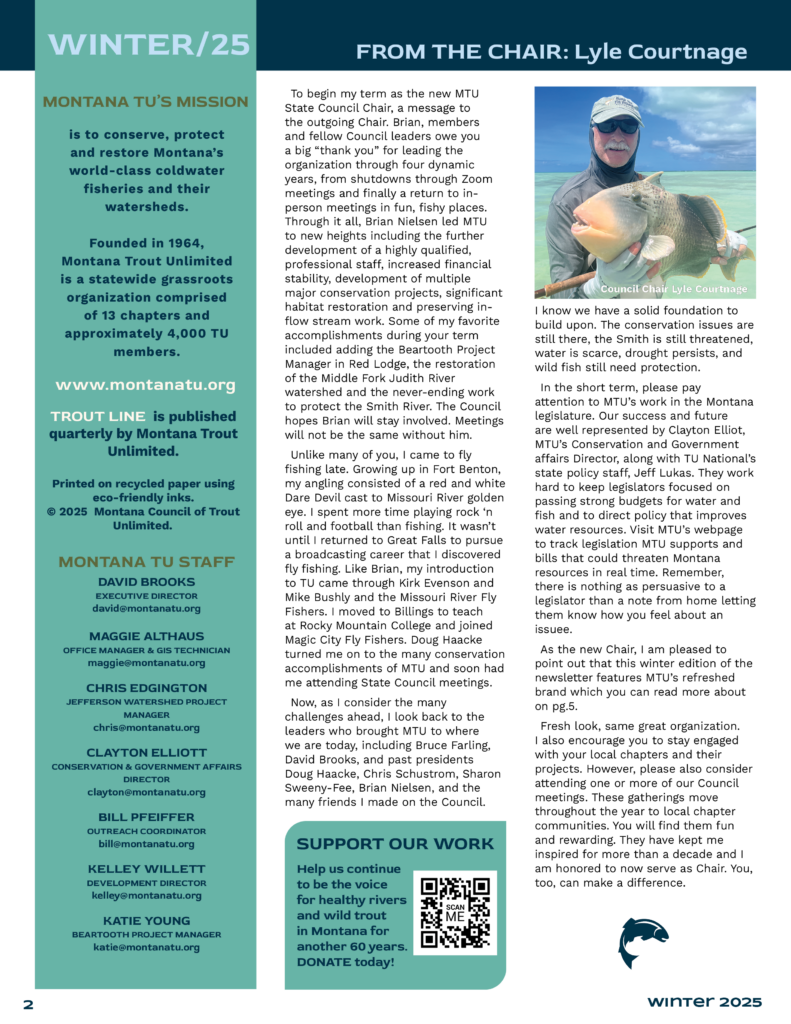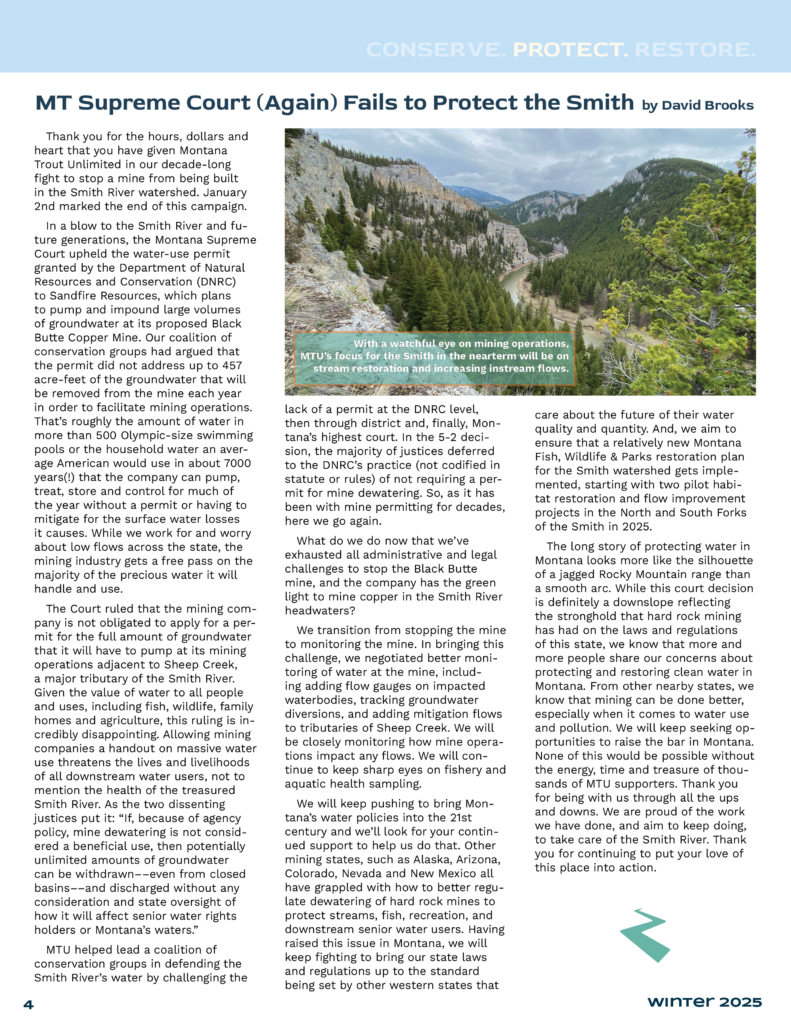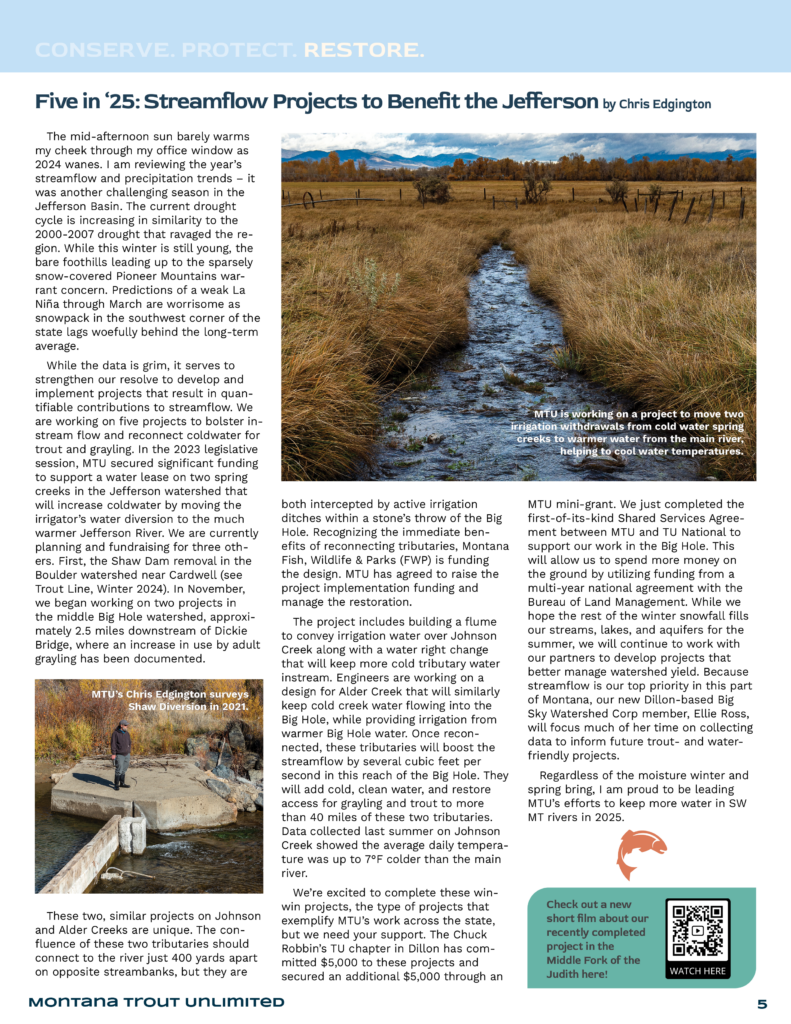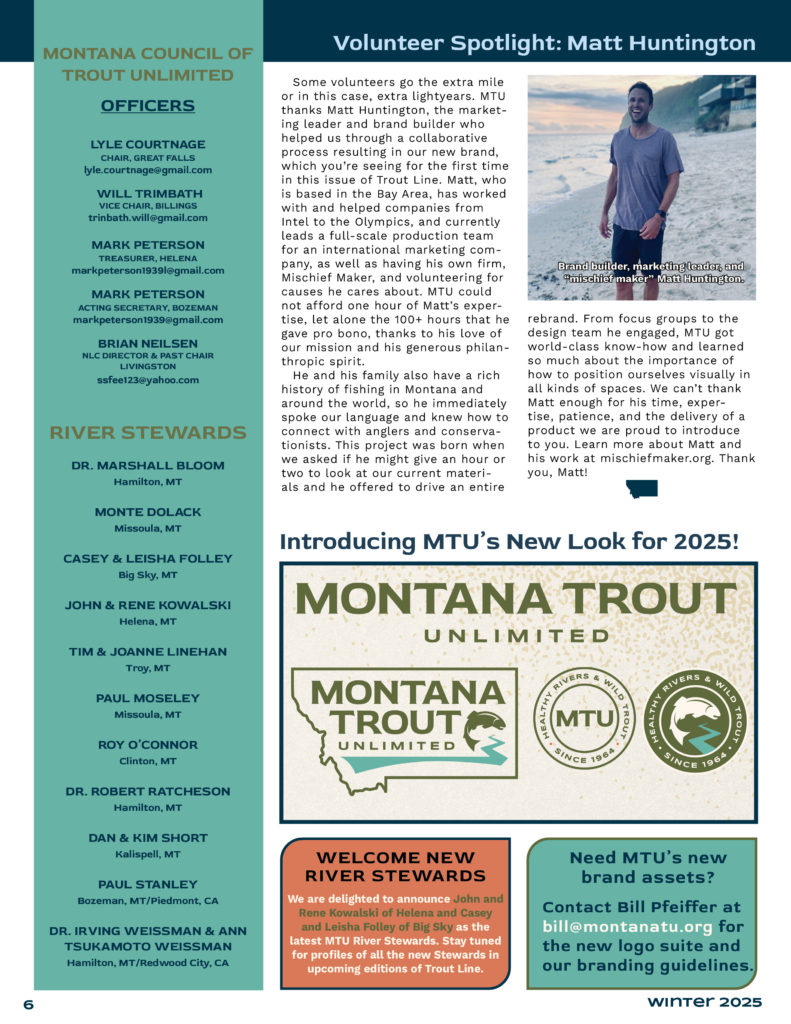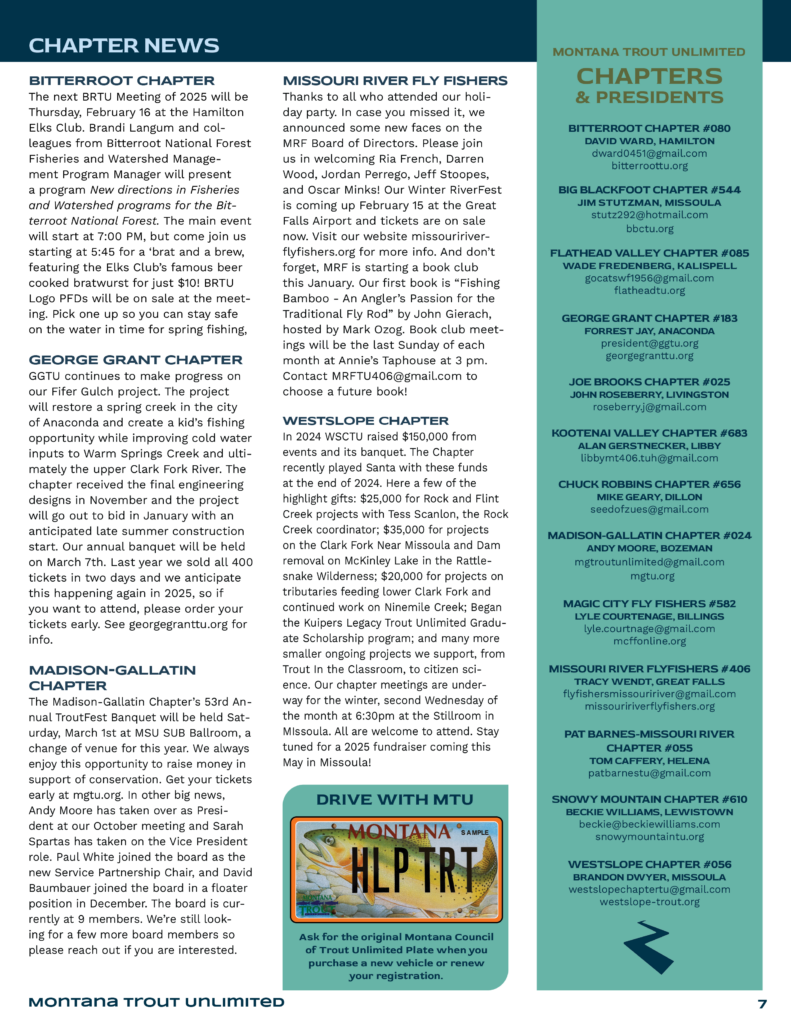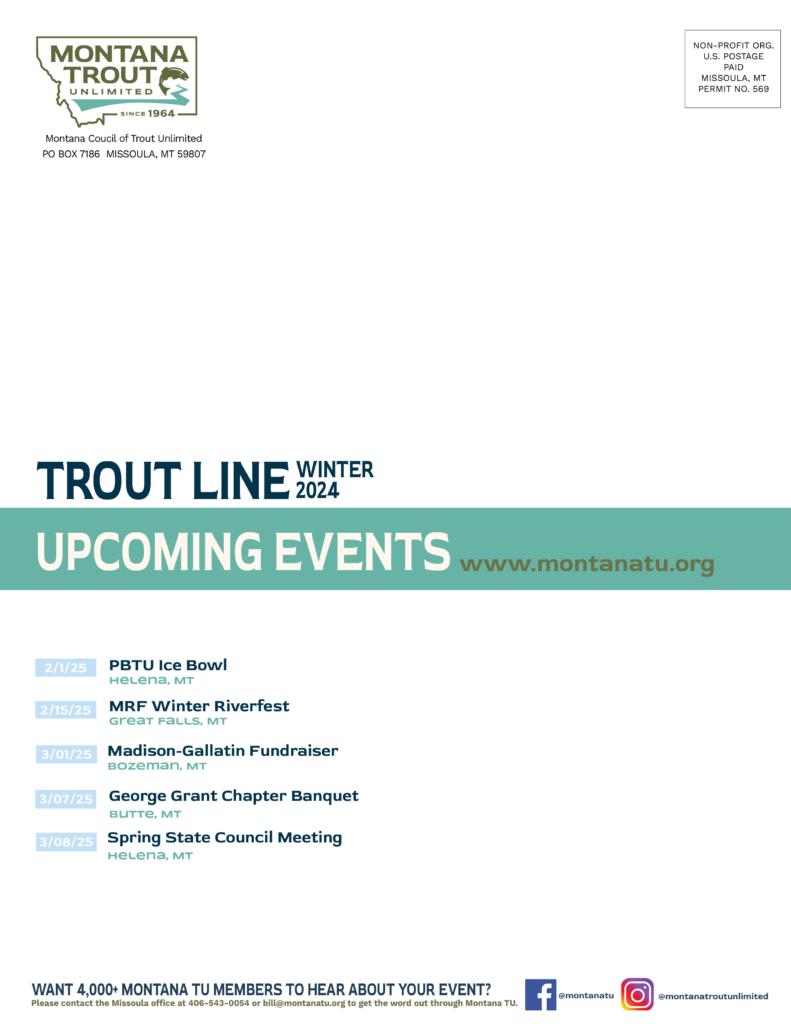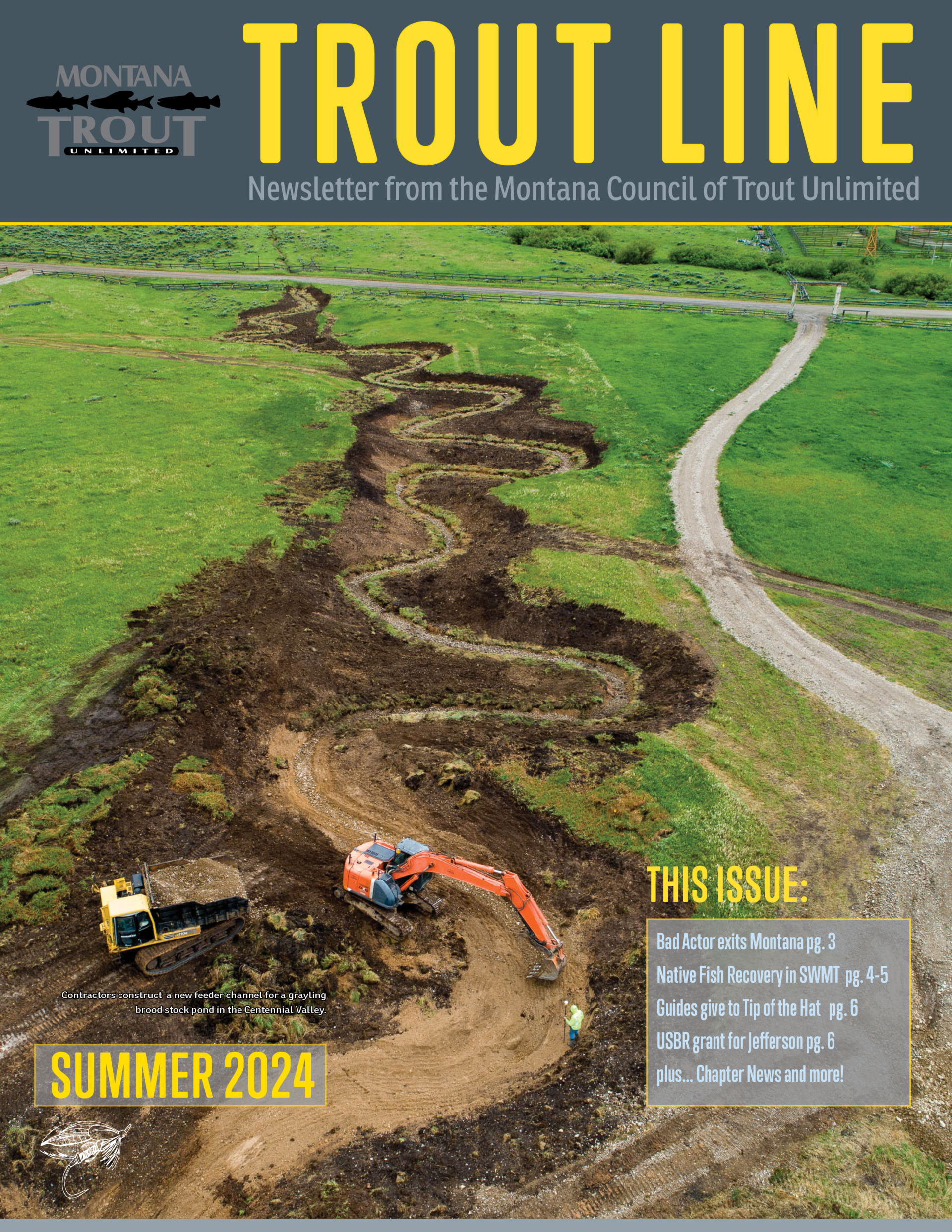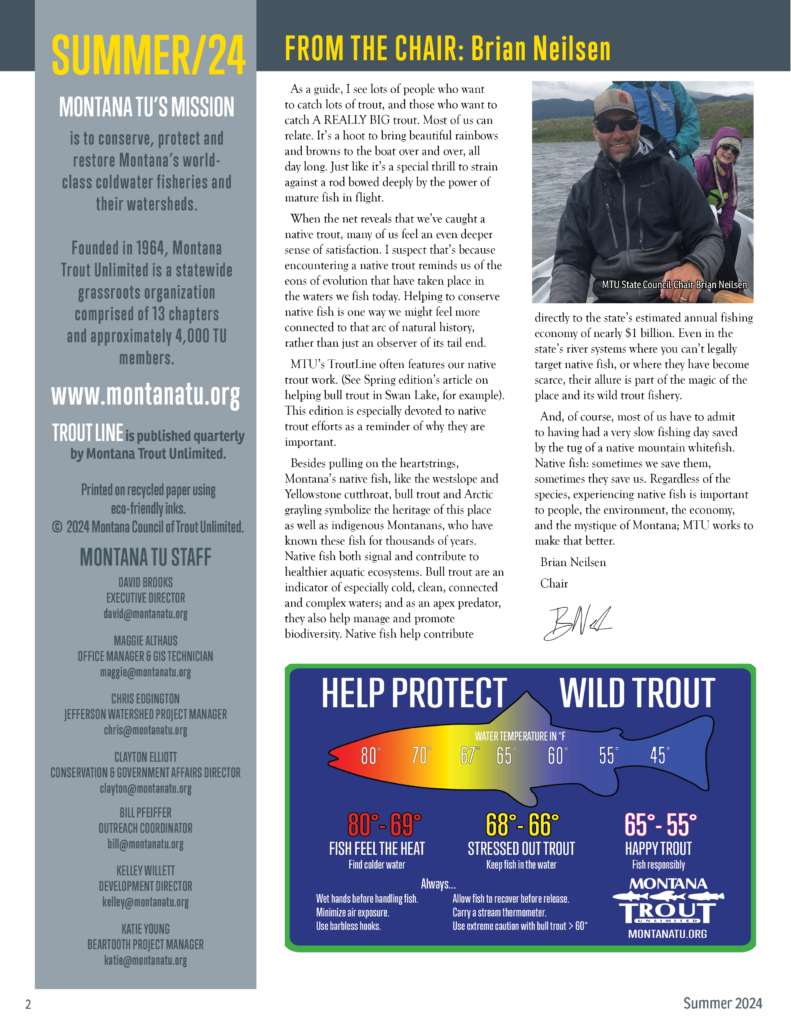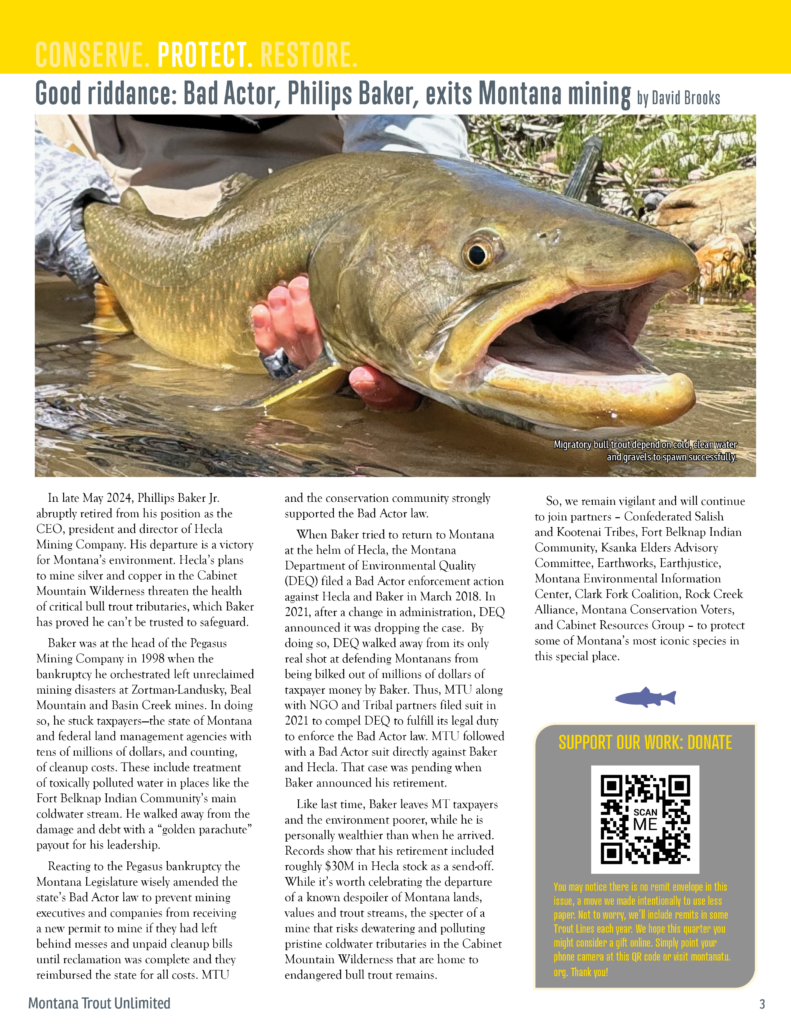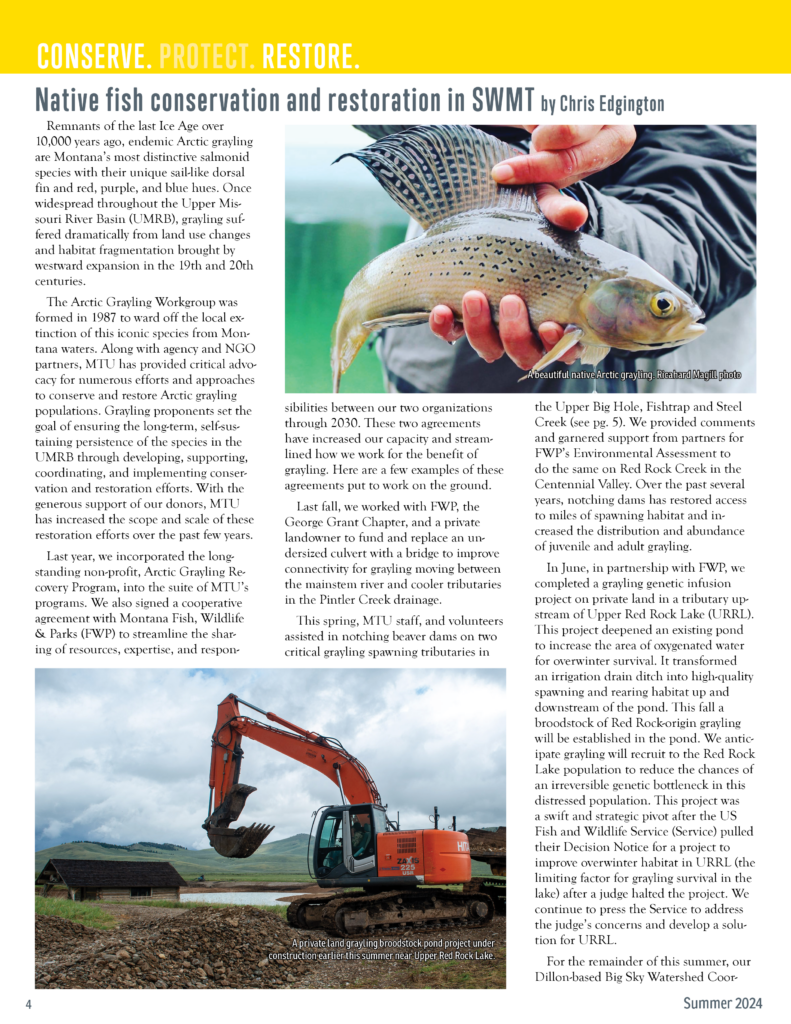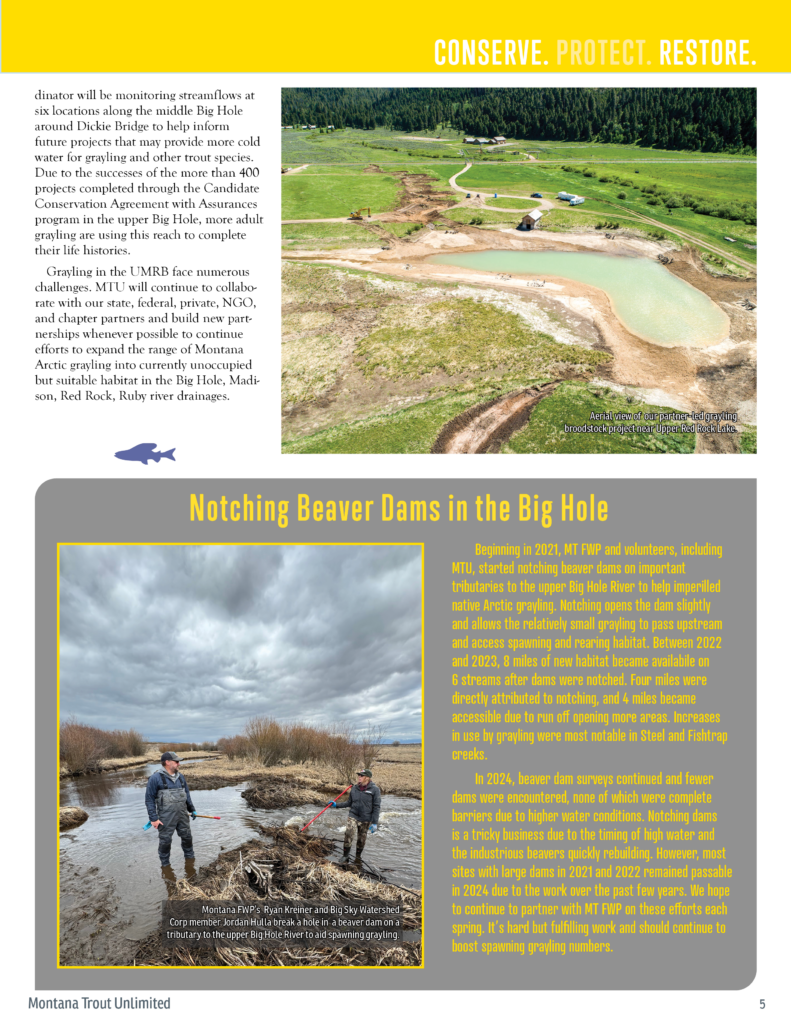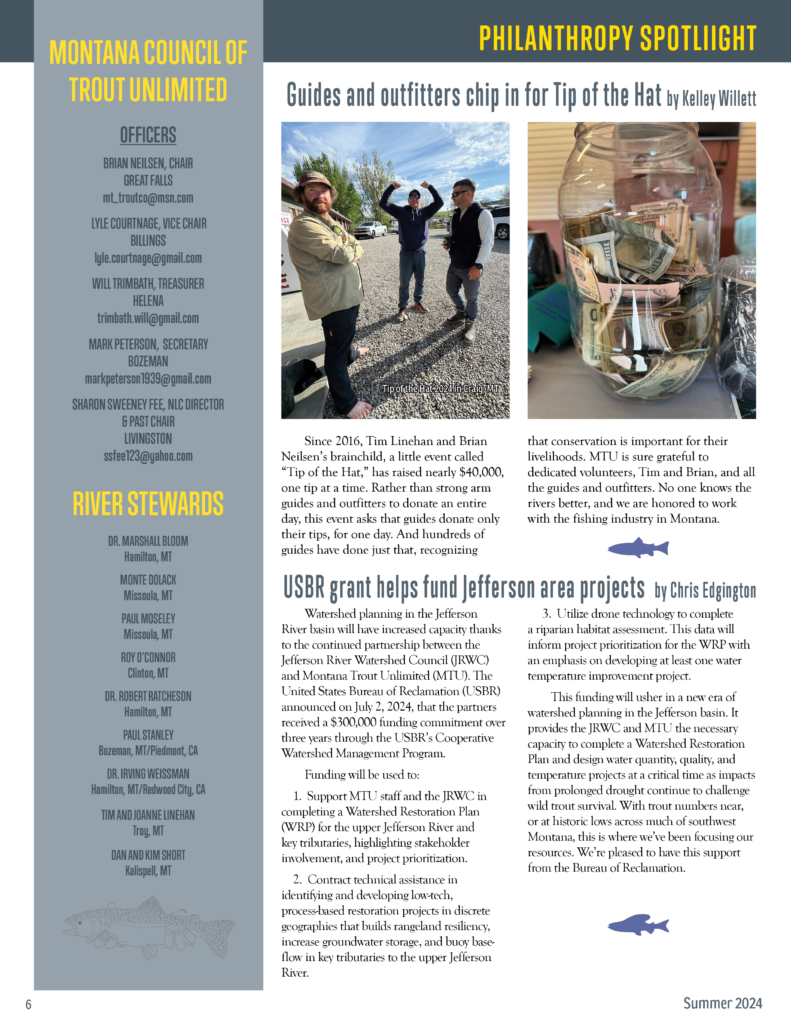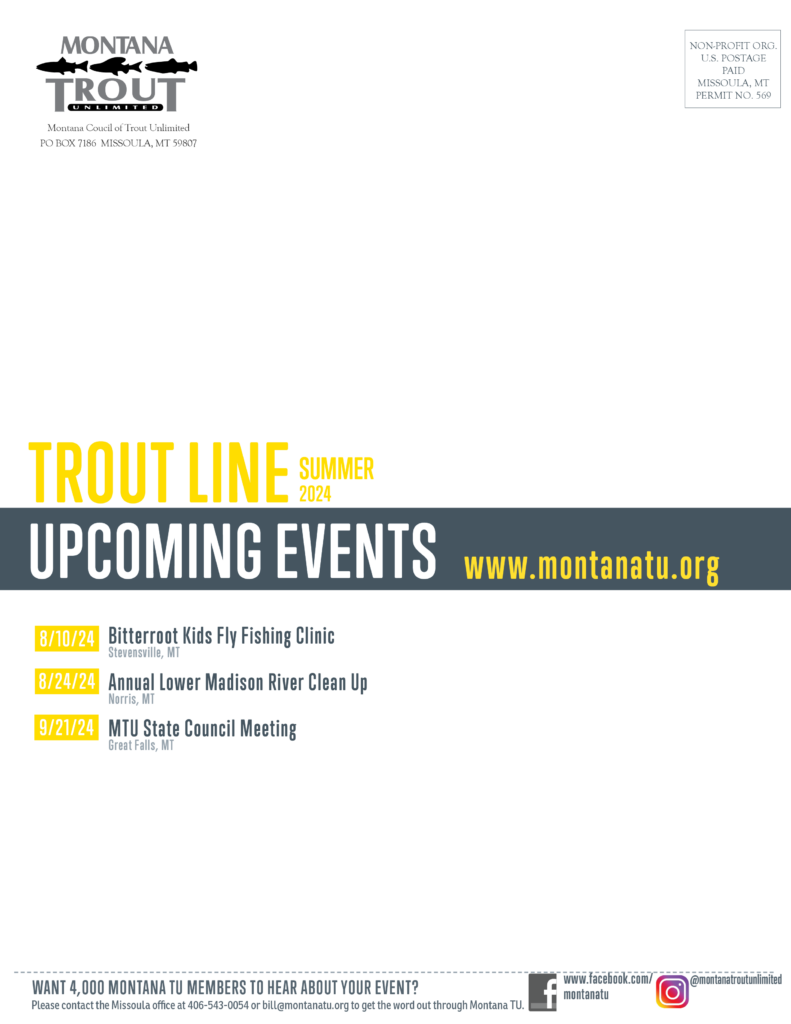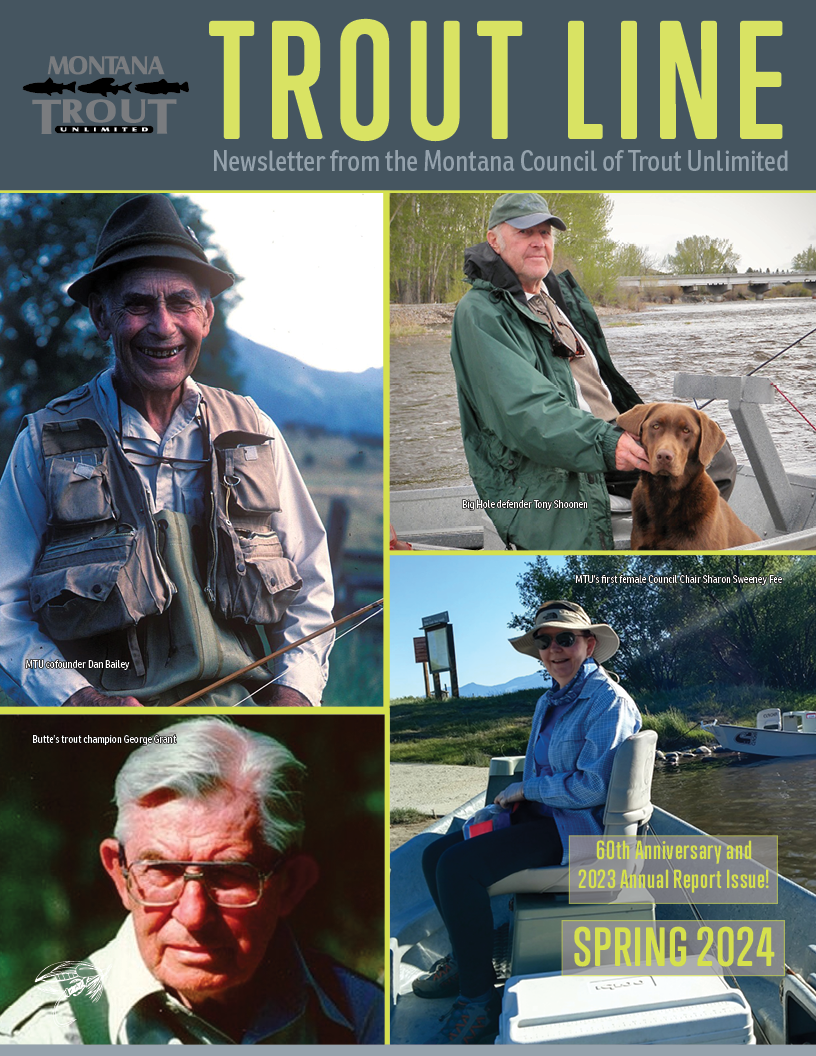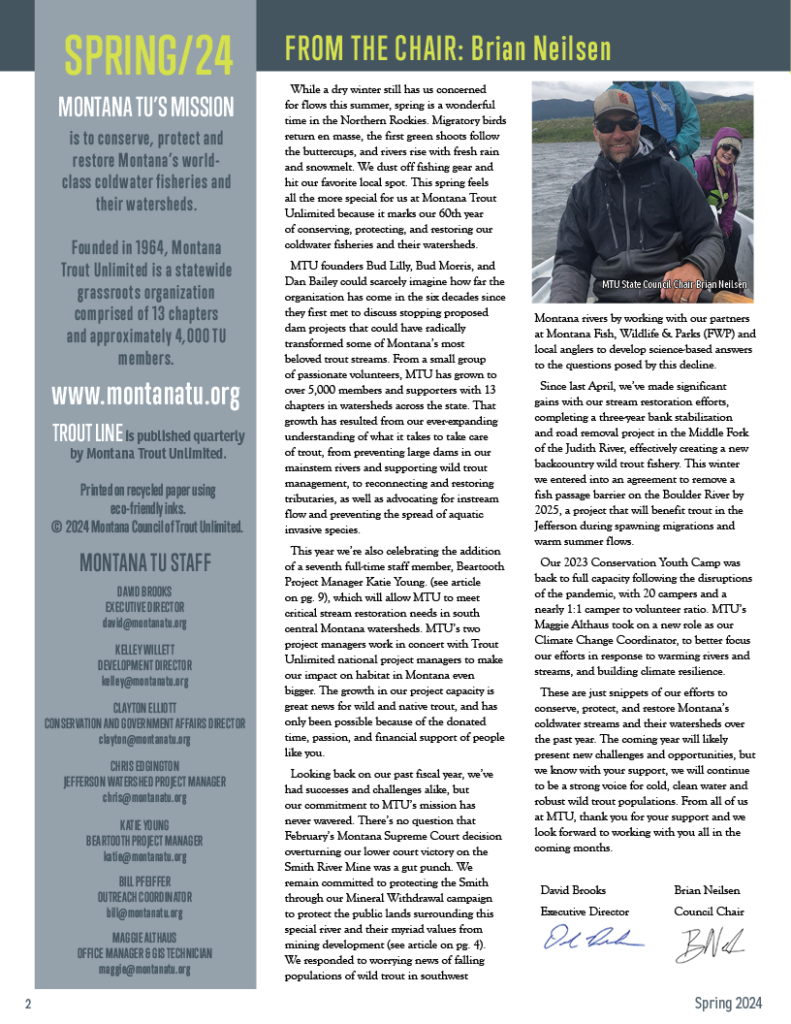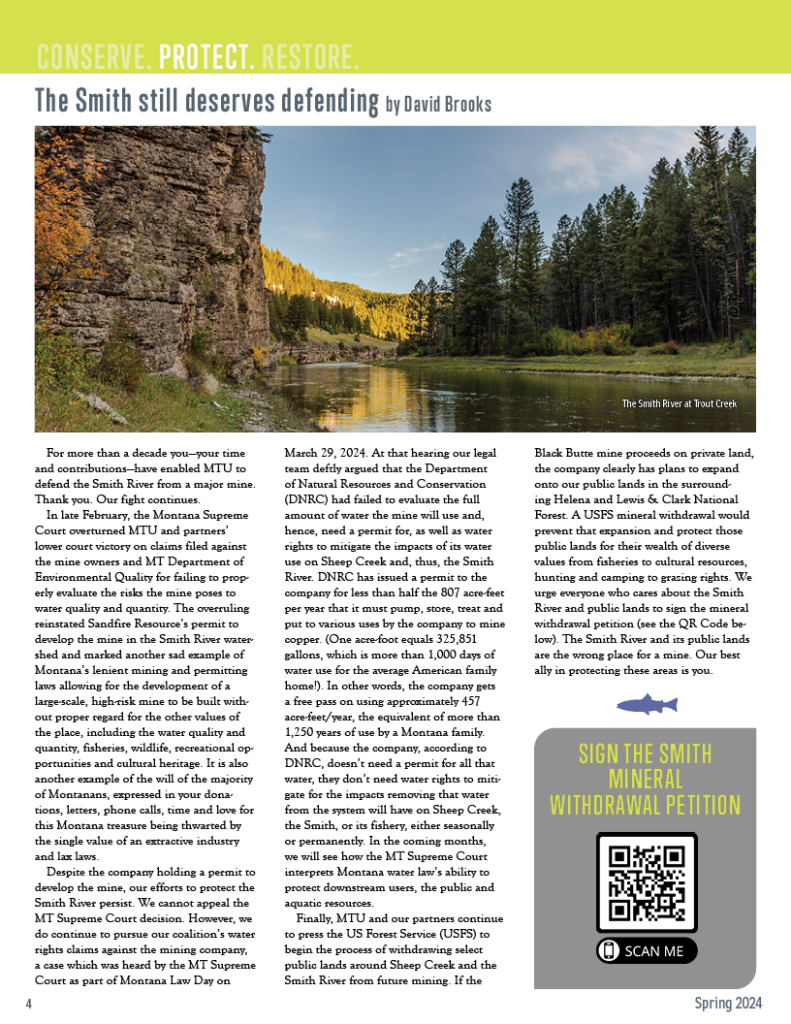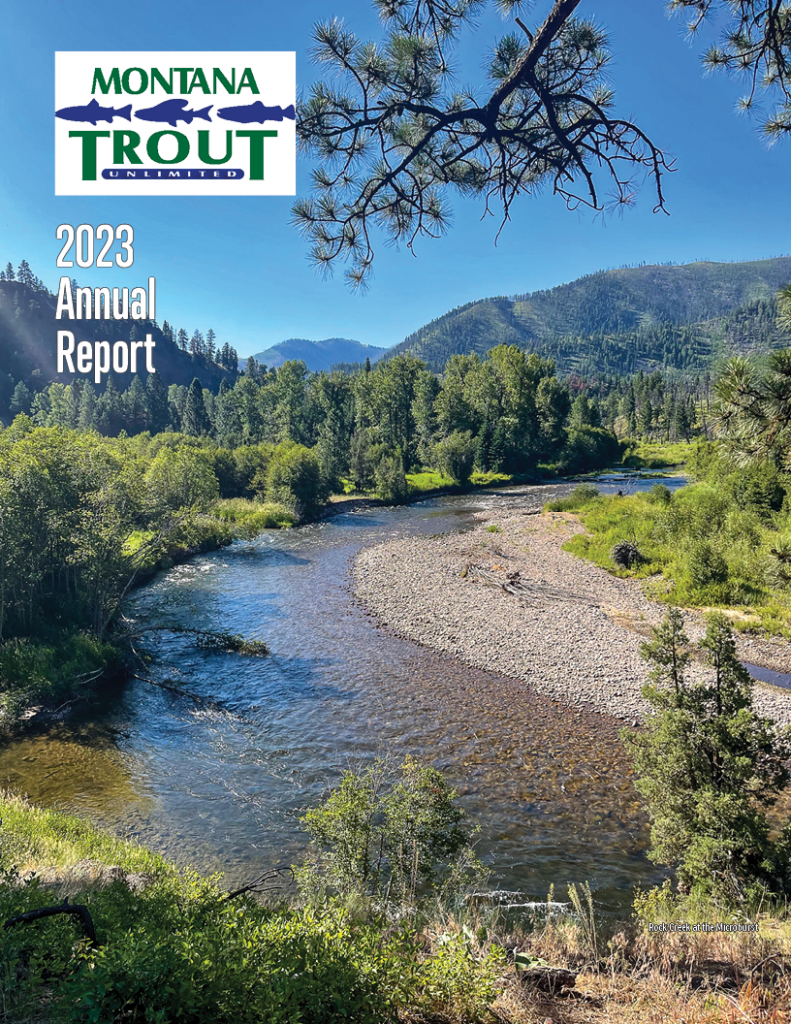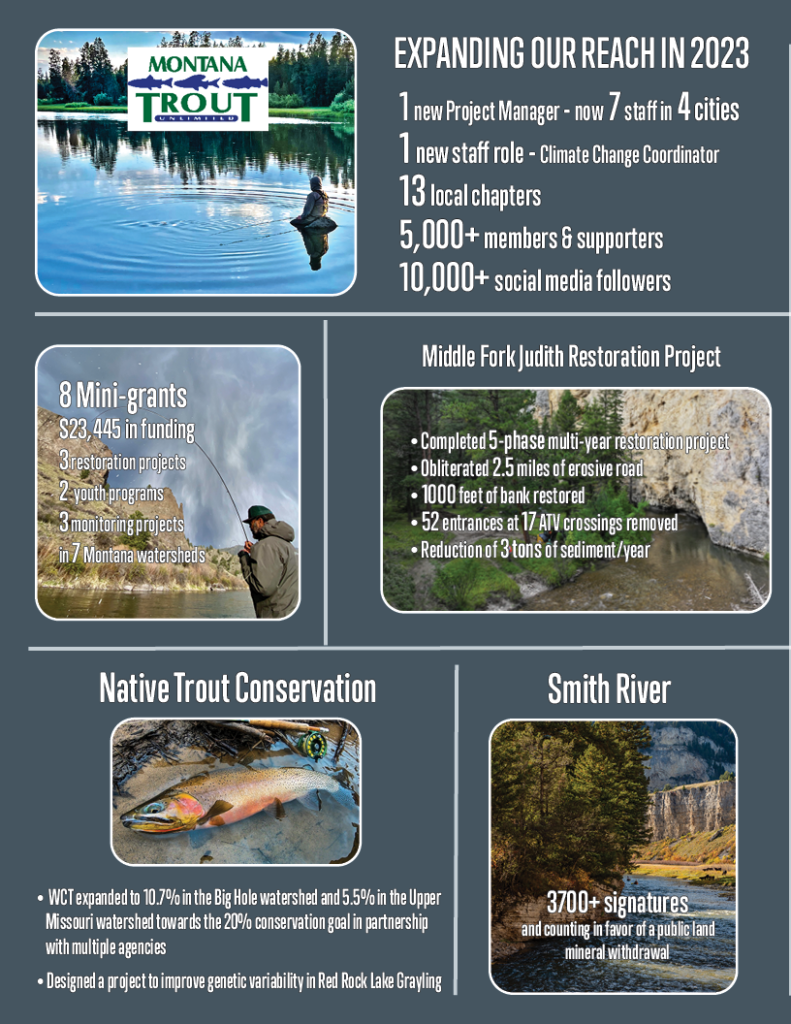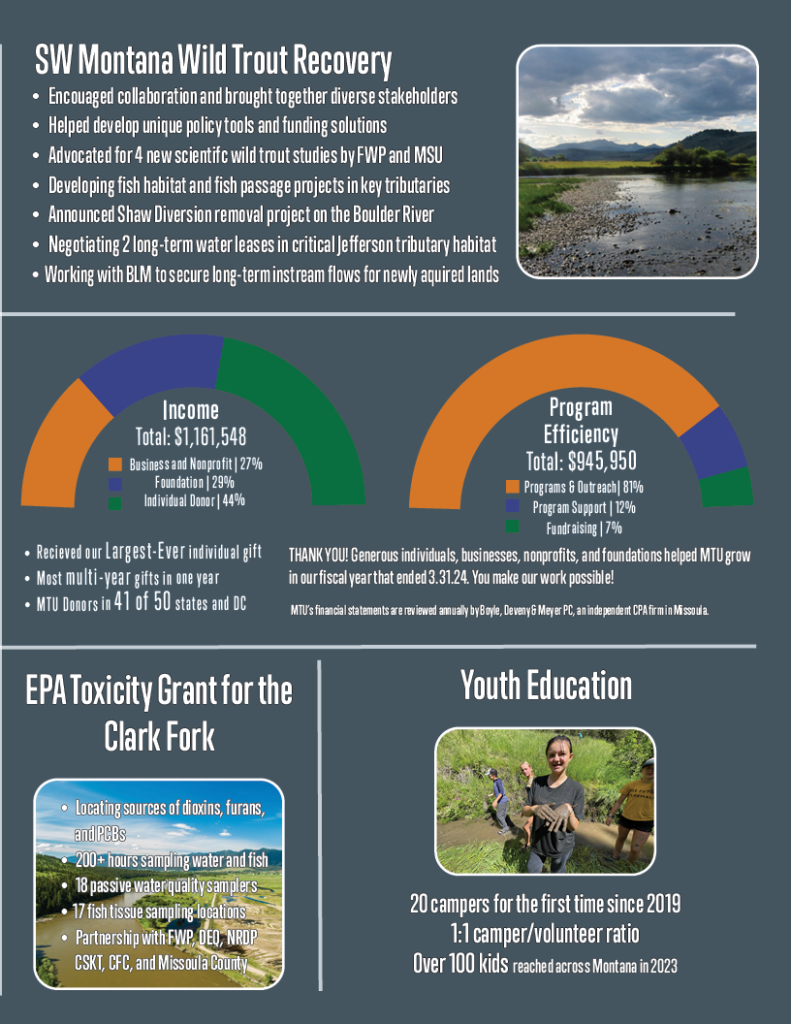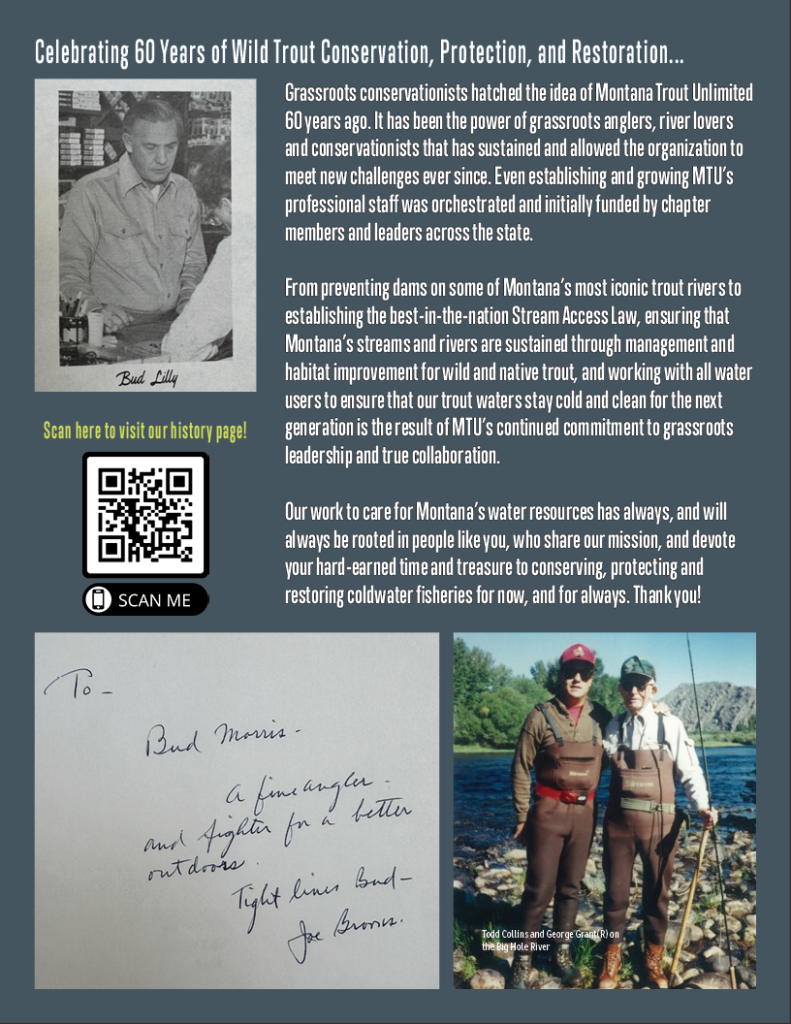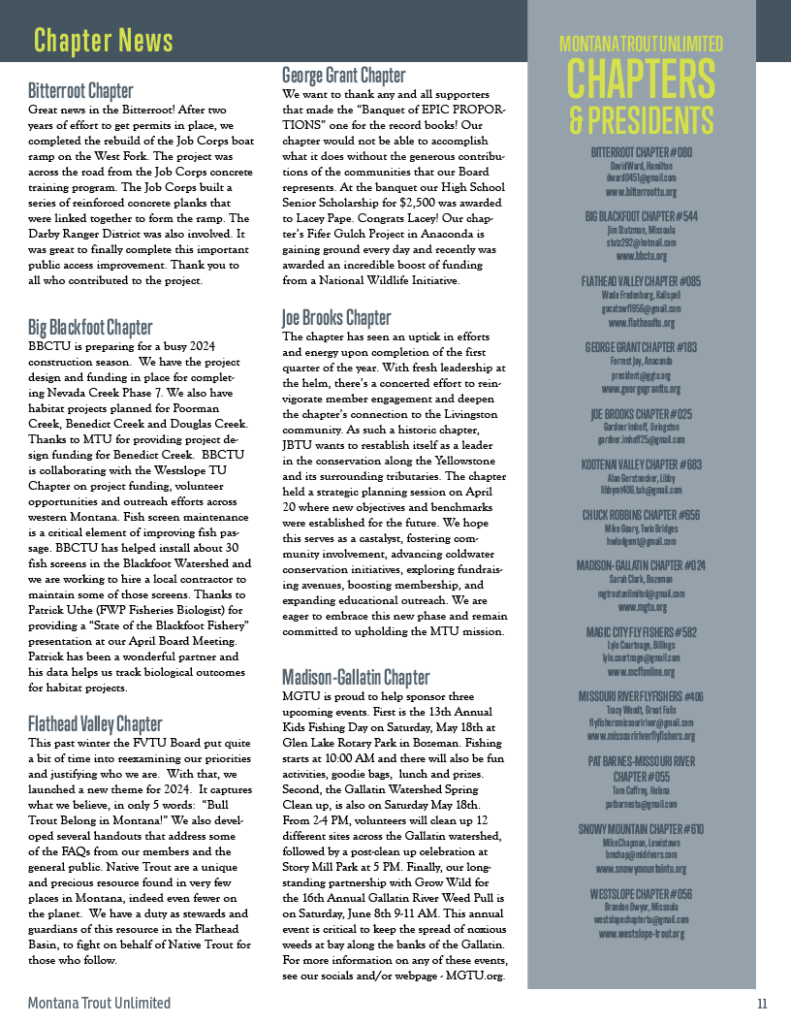The 2025 Montana Legislature has wrapped. Our staff worked at the Capitol for every day of the 90-day session. Of the more than 5,000 bills that were on tap in early January, we were tracking a few hundred for their potential impacts on water, fish and access. The half dozen bills we prioritized for their broad fishery and water benefits progressed through the half-way point of the session, transitioning from the House to the Senate, or vice versa. Those bills were the result of at least two years of work with myriad partners to better protect and improve streamflow across Montana. We helped move a few over the finish line and lost a few by close votes.
HB74 – Private Pond Regulation – PASSED
Our first win of the session was passing HB74, a bill that revises private fish pond law. This bill is the result of two years of study prompted by the previous legislature with our strong support. The new law raises permit fees from $10 to $600 for new private fish ponds, so that Montana Fish, Wildlife & Parks (FWP) can do the work of reviewing, regulating and enforcing these ponds without tapping into fishing license account funds intended for habitat and conservation work, our hunting and fishing license fees. The bill also helps FWP’s efforts to prevent the spread of invasive species into Montana’s world-class trout streams through better inspections and better accounting by the sellers of eggs and fish to private pond owners. Finally, the bill improves requirements for water rights and pond design. Montana’s natural waters are too valuable to be put at risk by water use and invasive species associated with private ponds. This bill helps protect those values.
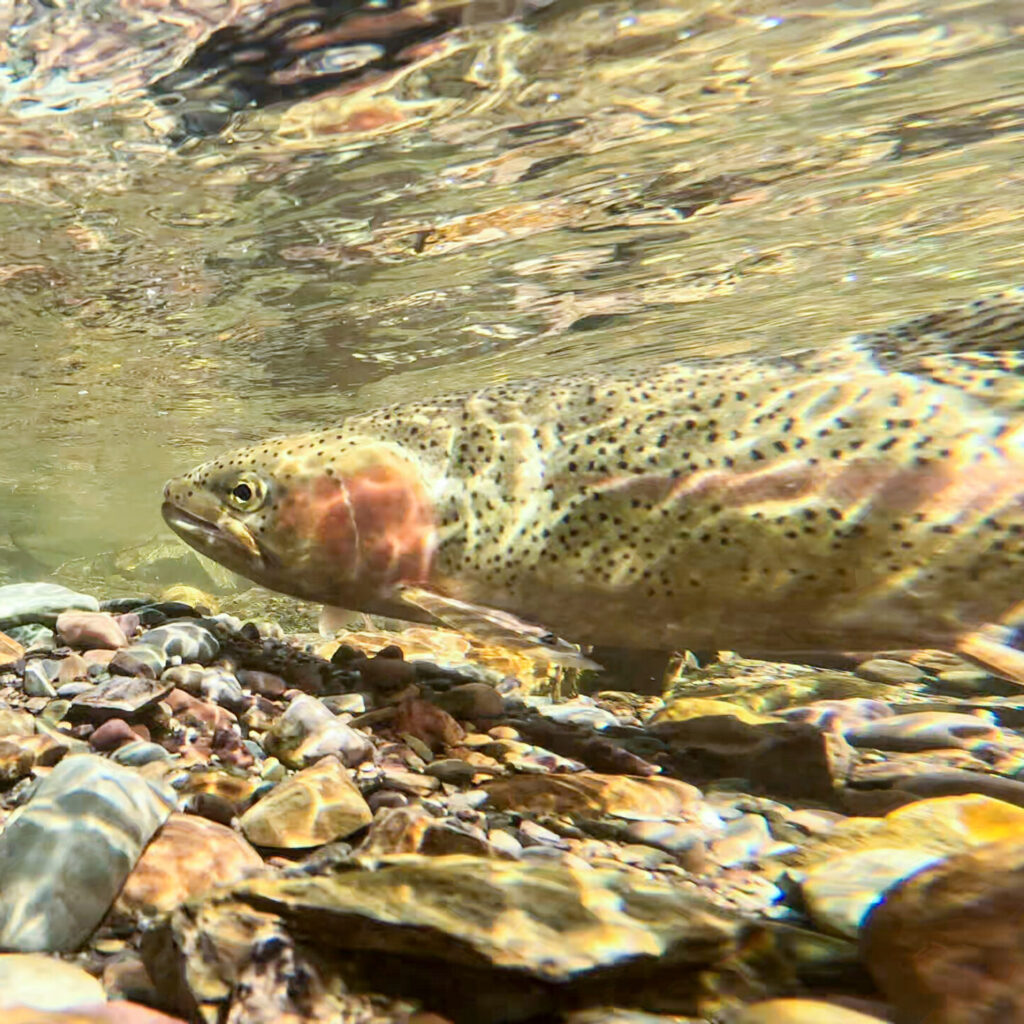
HB441 – Streamline Water Right Changes – PASSED
House Bill 441, a bill that adds efficiency and accuracy to the state’s process of clarifying and documenting all legitimate post-1973 water rights into final decrees, is now law. By moving forward the decades-long process of clarifying water rights, this bill will allow for better enforcement of legal water use and protect senior water rights. That will include protection of dedicated instream flow rights for fishery health. Additionally, Senate Bill 190 which reinstates the ability for water users to waive adverse effects in a change or permit process is on the Governor’s desk. This provision has been used numerous times with FWP-owned water rights for instream flow changes.
HB580 – Protecting Drought Management – PASSED
Another bill we championed for direct benefits to trout is HB580, which also passed. HB580 protects water right holders from claims that they have abandoned their water right if they voluntarily let some or all of their water stay instream as part of a drought management plan in their watershed when drought triggers are met. This is great peace of mind for water users who voluntarily give up cold, clean water during times when the fish need it most.
SB358 – Closing the Exempt Well Loophole – TABLED
You have likely heard or read about the efforts to clamp down on the egregious use of exempt wells for more than a decade. We entered this session focused on passing SB358, a multi-year collaborative effort by conservation, agriculture, state agency and development stakeholders. SB358 would have more strictly regulated loopholes in the existing exempt well law that allowed developers to use increasing amounts of ‘free’ water without a water right. Making new water is impossible, so SB358 aimed to reduce water use that falls outside of and threatens established water rights by prohibiting new exempt wells in five of Montana’s over-appropriated, fastest growing and most threatened watersheds – the Gallatin, Missoula, Bitterroot, Flathead and Helena valleys. Rigorous study of hydrology shows that continuing to allow more and more exempt wells in these areas will begin to drain groundwater supplies that are directly and legally connected to surface water. This bill failed with uniquely bipartisan ‘yes’ and ‘no’ votes. The status quo, with this bill’s failure, means that the giveaway of water to developers will continue in places like the Gallatin River, where streamflow and water quality are already suffering the effects of rapid growth. While unchecked exempt well use continues for the next two years, we will redouble our efforts to build support for the scientifically-sound, durable solution that was SB358.
HB886 – Water Rights Cases to Water Court – FAILED
R.I.P. HB886, a common sense bill that would have put future water rights disputes in front of water law-trained judges in water courts, rather than the catch-all district courts where water law cases currently go to flounder behind a docket of everything from personal injury to felony hearings. We supported this bill because the move to water division courts for water rights cases would have ensured they were tried more efficiently and legitimately, resulting in better decisions on illegal water use or things like legal changes to instream flow. Dying by a 50-50 draw in the House was hard to see, but provides motivation to work harder to get it done next time.
HB256 – Water Storage Trust Fund – TABLED but alive!
Back on the win side is an appropriation to benefit streamflow. Because maintaining healthy flows in Montana rivers is a top priority, one of the most important bills we supported this session was HB256. It would have created a $100M water storage trust using general fund dollars. Ninety-percent of the interest from that trust would be dedicated to improving state-owned water storage facilities, like Painted Rocks dam in the Bitterroot watershed, which includes stored water dedicated to late summer instream flows that are critical to the downstream wild trout fishery. The other 10% would go to the Department of Natural Resources and Conservation’s (DNRC) well-established Reclamation Development Grant Program, which has, and can continue to fund natural water storage, like beaver dam analogs, wetland improvements, or floodplain restoration. HB256 was tabled in committee in favor of moving the purpose and language of the bill into HB924 that creates a larger Growth and Opportunity Trust. The “GO Trust” bill contains the same stipulations for interest being available for the same reasons as HB256 articulated. Same good idea for trout, folded into a larger funding pot. This bill passed on the final day of the session.
State Budget and Appropriations – Money Matters!
One area MTU is proud to work in is the appropriations process. Without funding to back it up, policy is merely words on paper. This session we succeeded in securing additional important funding for state agencies and conservation. Here’s a brief synopsis of new money we supported that is now part of the biennial budget.




As always, things moved fast throughout the 2025 session, especially near the end. One silent win of the session for the people of Montana who care about rivers was the fact that not a single bill to diminish our stream access law had so much as a hearing. If you have questions or thoughts about any of the gains we made for trout and coldwater habitats this session, we welcome the feedback. Without your encouragement and support we could not continue to do the work of defending and promoting policy that benefits water, fish and the people who love those things.

